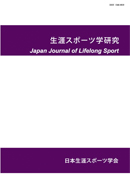Volume 10, Issue 1-2
Displaying 1-7 of 7 articles from this issue
- |<
- <
- 1
- >
- >|
Review
-
Article type: Review
2014Volume 10Issue 1-2 Pages 1-9
Published: March 31, 2014
Released on J-STAGE: September 30, 2014
Download PDF (1100K)
Originals
-
2014Volume 10Issue 1-2 Pages 11-20
Published: March 31, 2014
Released on J-STAGE: September 30, 2014
Download PDF (877K) -
2014Volume 10Issue 1-2 Pages 21-30
Published: March 31, 2014
Released on J-STAGE: September 30, 2014
Download PDF (963K) -
2014Volume 10Issue 1-2 Pages 31-40
Published: March 31, 2014
Released on J-STAGE: September 30, 2014
Download PDF (1005K)
Material
-
2014Volume 10Issue 1-2 Pages 41-48
Published: March 31, 2014
Released on J-STAGE: September 30, 2014
Download PDF (898K)
The 15th Annual Meeting
-
2014Volume 10Issue 1-2 Pages 51-84
Published: March 31, 2014
Released on J-STAGE: September 30, 2014
Download PDF (11647K) -
2014Volume 10Issue 1-2 Pages 87-97
Published: March 31, 2014
Released on J-STAGE: September 30, 2014
Download PDF (844K)
- |<
- <
- 1
- >
- >|
